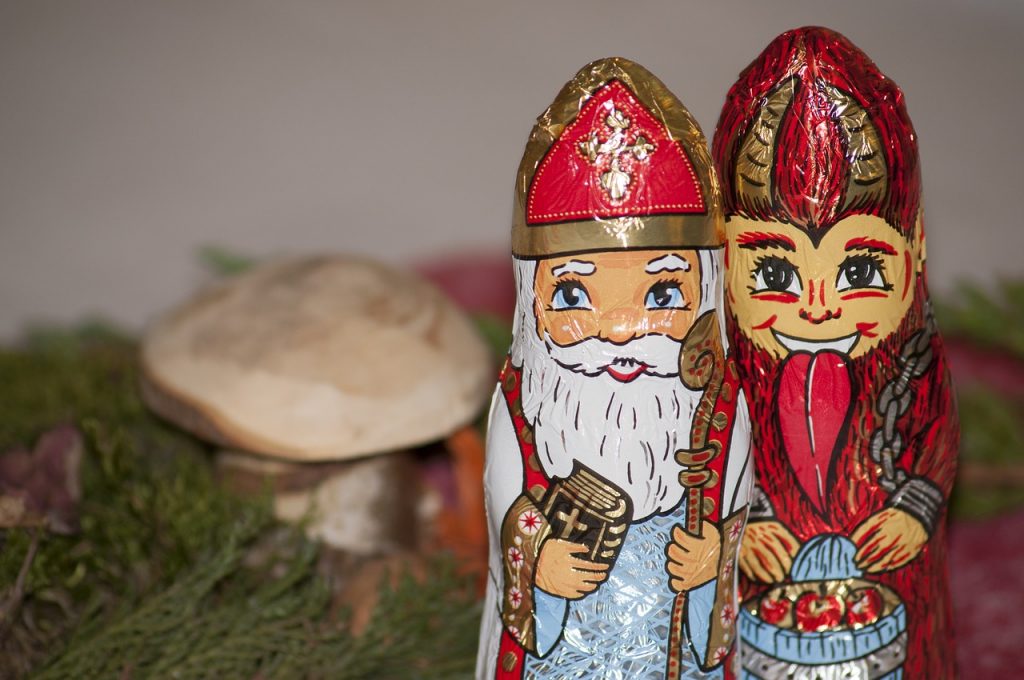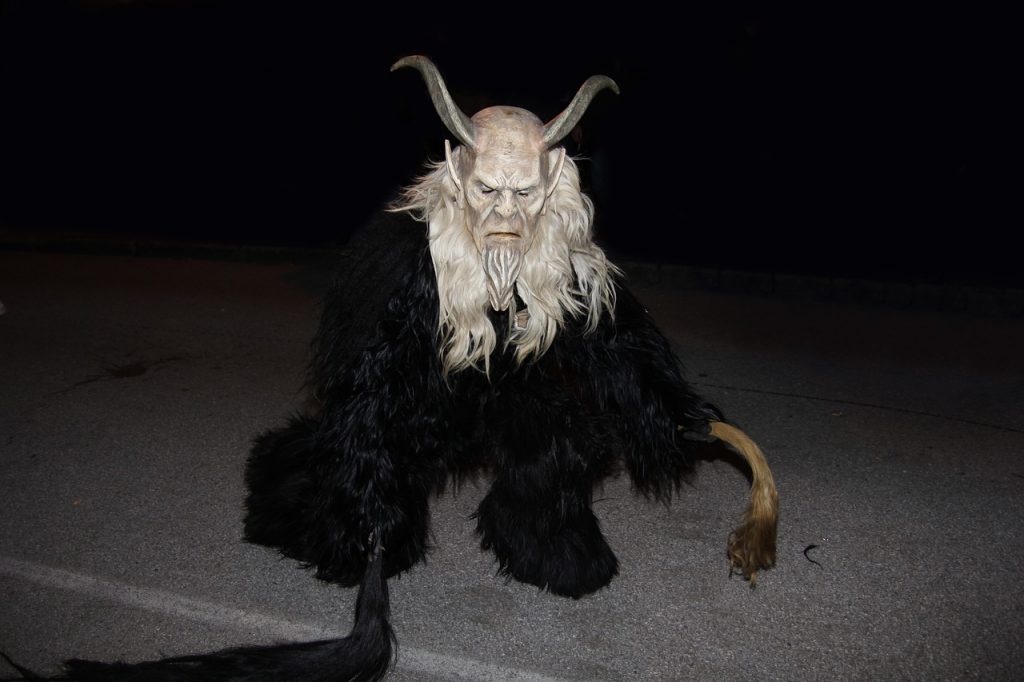German Companions of Saint Nicholas Posted by Constanze on Dec 5, 2018 in Uncategorized
Guten Tag! As you may know, tomorrow (December 6th) is Nikolaustag (Saint Nicholas Day) in Germany. This is a German Christmas celebration separate to that of December 24/25. If you are not yet familiar with Nikolaustag, I recommend reading this post and this post first, to get a good introduction to it.

If you are aware of what Nikolaustag entails, you will also know of Krampus, the malevolent companion of Sankt Nikolaus who will bring presents to good children, but punish or take naughty children away with him. Despite being most prominent in Bavaria and Austria, Krampus has become the most well-known German Christmas anti-hero. There is even a 2015 horror movie in his name!

Krampus, whose name comes from the old German krampen, meaning to claw (the modern word is krallen), stands out because of his terrifying appearance. But Krampus is not the only malevolent German Christmas character. There are many different names you will hear, depending on where you are in the German-speaking world. So let’s look at some of the other names for the ‘bad cop’ of this German Christmas duo, and see what they mean.
Knecht Ruprecht is the main attendant of Saint Nicholas in northern Germany. Knecht Ruprecht is less frightening in appearance than Krampus. He is often portrayed as a more sinister-looking version of Saint Nicholas, wearing muted colours and a dark beard. The name Knecht Ruprecht literally means Farmhand Rupert or Servant Rupert, and the name Ruprecht was also a common name given to the devil in Germany.
In die Pfalz (the Palatinate), a region in south-west Germany, this character is called Belsnickel (or Pelsnickel). Belsnickel does not actually accompany Saint Nicholas, but visits alone, so he represents both the good (giving presents) and the bad (punishing children). He often wears lots of fur, hence the name: Bels or Pels comes from the word der Pelz meaning fur (der Tierpelz – animal fur, for example). The second part of the word, nickel, is a sort of pet name for Nikolaus.
A modern-day Belsnickel, wearing fur. By Peptobismolman1 – Own work, CC BY-SA 3.0, Link

A Belsnickel from 1950s Philadelphia, USA. By Diversitti and Gen. Quon – This is a crop of the image “File:Belsnickel.jpg” by Diversitti, CC BY-SA 3.0, Link
Interestingly, this tradition of Belsnickel is also alive in Pennsylvania, USA. This is because many people in Pennsylvania have German ancestry, with many coming from die Pfalz (the Palatinate), where Belsnickel originated. If you’d like to know more about Pennsylvania Germans and their fascinating language, click here and here for blog posts on this topic!
In Switzerland, the character is called Schmutzli. He has a dirty face (from soot, soil, or other dirt), which is where his name comes from: der Schmutz is the German word for dirt, and by adding a li onto the end, it makes it mean dirty little thing/dirty little person. The Swiss language uses the suffix li to give words an affectionate or ‘cute’ tone.
As you can see, there are many interesting facts behind these crazy German names! This is not the end of the list, however. You may also come across a Rumpelklas, a Drapp and a Buzebergt, amongst others, whilst in the Netherlands you will hear of Zwarte Piet (‘Black Pete’) and in Russia, Little Babushka. Each have their own fascinating name origins, appearances and stories.
I hope this has been interesting! Enjoy the rest of December 5th – which is, by the way, Krampusnacht (Krampus Night)! Not sure what that is? See the short video below.
Viel Spaß (have fun)!

Build vocabulary, practice pronunciation, and more with Transparent Language Online. Available anytime, anywhere, on any device.




Comments:
Steve:
Thanks Constanze, I always enjoy reading your articles!